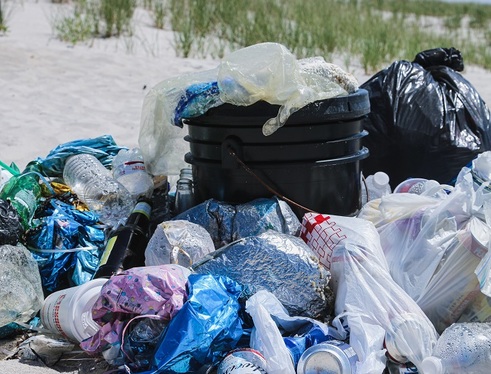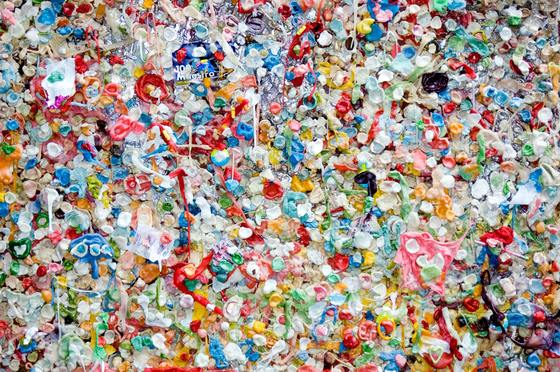Is plastic so bad?
| > Home > About Insinc > Blog > Is plastic so bad? |
|
Why is plastic bad for the planet?
Plastic is everywhere. It is used in everything from medical equipment to make up. We have come to rely on plastic, using it once and throwing it away. According to the World Wildlife Fund, of the 5 million tons of plastic waste produced in the UK every year, only 26 per cent of it is recycled.
Plastic is unsustainable
Plastics are made from unsustainable materials, including coal, natural gases, and crude oil, contributing an estimated five per cent of global greenhouse gas emissions to the warming of the planet.
Plastic takes a long time to degrade and leaches toxins
 Plastic has a really bad name. There is too much of it and it either takes too long - 1,000 years or more - to decompose or it does not decompose at all. Harmful chemicals leach into the environment and the food chain. Plastic forms ever-increasing islands of waste in the water and piles on beaches. It releases greenhouse gases into the atmosphere if burned. Microbeads and tiny plastic shreds harm wild and marine life. In 2017, scientists found that a third of UK-caught fish contained plastic.
Plastic has a really bad name. There is too much of it and it either takes too long - 1,000 years or more - to decompose or it does not decompose at all. Harmful chemicals leach into the environment and the food chain. Plastic forms ever-increasing islands of waste in the water and piles on beaches. It releases greenhouse gases into the atmosphere if burned. Microbeads and tiny plastic shreds harm wild and marine life. In 2017, scientists found that a third of UK-caught fish contained plastic.
What have we done about plastic?
Supermarkets no longer hand out free plastic bags to their customers, there is a ban on plastic drinking straws and vegetables wrapped in Glad Wrap are shunned by many consumers.
The alternatives are not always so green
Some argue that plastic is less harmful to the environment than many other forms of packaging. A 2020 report warns that we are at risk of turning to alternatives that could be just as bad, if not worse, for the environment.
Is plastic that bad?
Plastic is light, durable, cheap, hard-wearing and readily available, which is also what makes it a burden on the environment.
There are risks for the environment in swapping to other packaging materials.
Glass
Glass bottles, for instance, are much heavier than plastic so are far more polluting to transport. A considerable amount of energy is used during both the manufacture and the recycling of glass.
Paper
Paper bags have higher carbon emissions than plastic bags, and are more difficult to re-use, given how quickly paper tends to fall apart. To make paper, trees have to be cut down and chopped up, then the pulp is steeped in cubic meters of water with added chemicals. A significant amount of resources and energy are used during this production process
A Danish environmental authority has compared different types of bags and how environmentally friendly they are through their life cycle. They claim a paper bag has to be reused up to 43 times before it is as environmentally friendly as a plastic bag.
PET bags
Reusable plastic bags made from recycled PET have to be reused 84 times for all the environmental damage to be compensated. A bag made from organic cotton, which requires massive amounts of water to produce, has to be reused 149 times in order to compensate for the damage to the environment. (The Telegraph puts this figure as high as 327 times.)
Metal drink bottles
Aluminium, the trendy solution to plastic water bottles, has double the carbon footprint of a plastic bottle in terms of production, although it is easier to fully recycle.
Food wrap
Then there’s the issue of food wrapping. It’s easy to walk around the supermarket and get upset about the amount of seemingly unnecessary packaging on food. But plastic packaging can in fact prolong the shelf life of food, lowering food waste. A plastic-wrapped cucumber, for instance, lasts up to 10 days longer than one with no packaging at all.
Food wastage has a hugely detrimental effect on the environment and contributes about 20 million tonnes of greenhouse gases every year from the UK alone. Clearly, those products not in packaging are more environmentally friendly than the ones that are, but as a general rule, it is claimed, food waste is more harmful to the environment than the packaging.
What about different kinds of plastic?
Biodegradable, compostable and bio-plastics are all popular choices, but the issue is consumers are confused and don’t know how to dispose of them correctly.
Compostable products can’t simply be thrown on your home compost pile. They require industrial composting. If you throw compostable or biodegradable into your recycling bin, you can contaminate the entire lot.
Bio-plastics are products made from alternatives to petroleum, often from plants such as corn or sugarcane, but require a huge amount of energy to create - energy that currently comes largely from burning fossil fuels.
What’s the answer to plastic waste?
A very simple answer is to regulate your use of plastic, as well as everything else. To make the world a little bit better reduce, reuse, recycle. The single use of any product is what causes the most damage to the environment, no matter what it’s made of. The problem is the sheer volume of what we have, not just the fact it’s plastic. Our throwaway attitude to everything is the problem.
So, if you’re concerned about your carbon footprint, focus on reducing the environmental impact of everything you buy, not simply on reducing plastic use. Plastic, it seems, may not be the worst culprit after all.
Here at Insinc Products we choose to use and promote eco-friendly and sustainable products as much as possible because we have a firm belief in doing what we can to save our environment. Not sure which is the right product for you? If you would like advice on what sustainable products to use at your business or place or work, call us on 0508 467 462.
We're always happy to help!
***This article is included in Twinkl's Eco-Friendly and Sustainability campaign, and is part of their article Some great ideas to be more sustainable in 2021
Posted: Tuesday 19 January 2021




